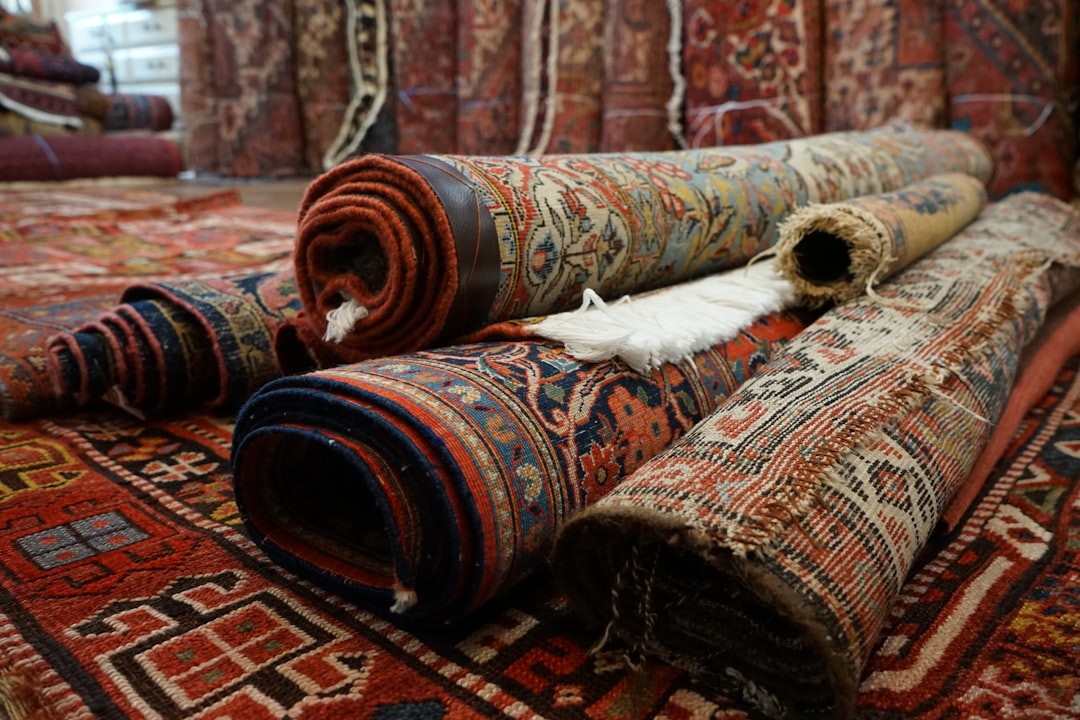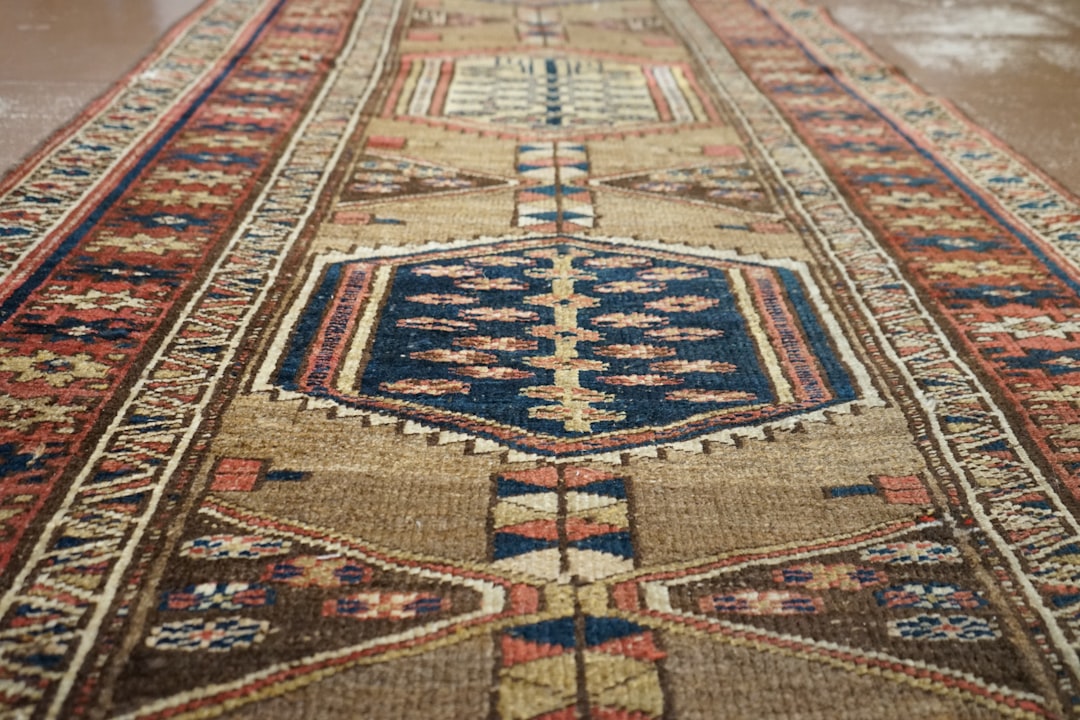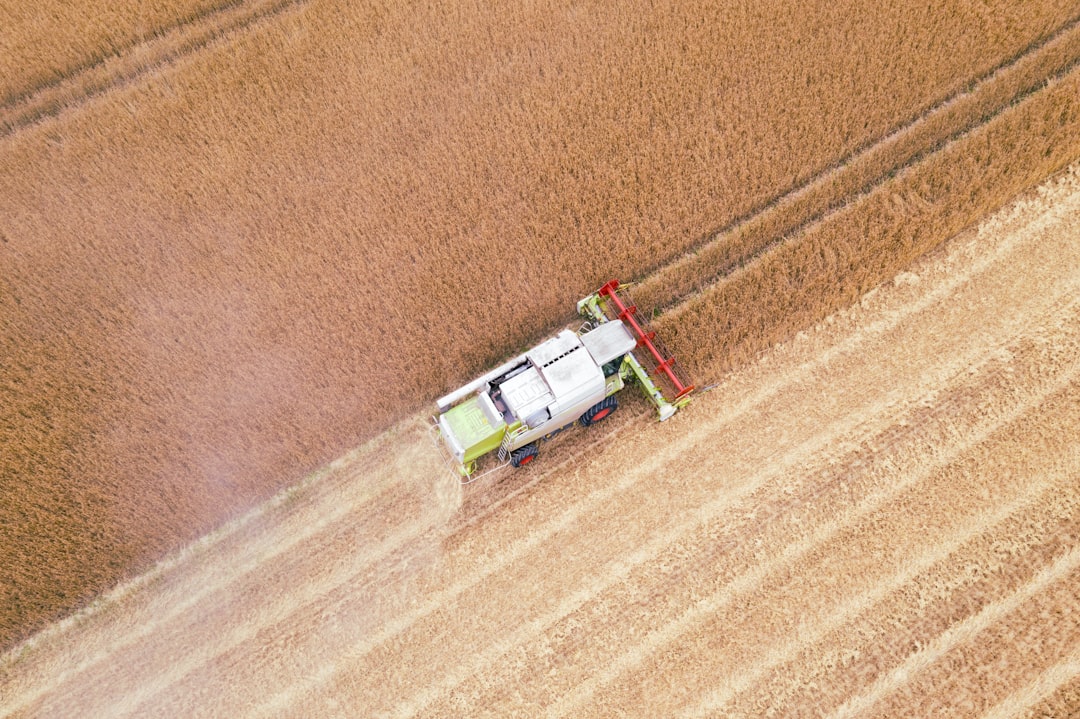

Engage prospects with a scan and streamline customer engagement with FREE QR code marketing tools by Sona – no strings attached!
Create a Free QR CodeFree consultation

No commitment

Engage prospects with a scan and streamline customer engagement with FREE QR code marketing tools by Sona – no strings attached!
Create a Free QR CodeFree consultation

No commitment
Carpet and rug repair services face a unique challenge: delivering fast, seamless customer experiences while bridging the gap between physical environments and digital convenience. For business owners and marketers in this space, driving instant bookings and capturing leads can be tough when relying solely on traditional methods such as phone calls, paper forms, or slow-loading websites. One recurring frustration is missing high-value prospects who show interest but never take the extra step, leading to lost opportunities that remain invisible in the CRM.
Customers expect a frictionless process, especially when they spot damage right at home or in the office and want an immediate solution. In today's landscape, QR codes in marketing have emerged as a critical tool to unify the offline and online experience for carpet and rug restoration. They enable companies to transform every physical touchpoint into an entryway for direct digital engagement, whether it is a flyer in the neighborhood, a sign on a service van, or the invoice handed to a client after a cleaning session.
By leveraging QR codes strategically, carpet and rug repair services can offer instant booking, promptly capture lead information, gather valuable customer insights, and measure campaign performance in real time without requiring an app or complicated onboarding. This article explores how QR codes unlock new avenues for lead generation, client communication, and operational efficiency within the carpet and rug repair industry.

QR codes bridge the gap between physical touchpoints and digital outcomes, making it easier for carpet and rug repair businesses to offer instant booking capabilities and capture qualified leads on the spot. When someone notices a frayed edge, a burn mark, or a pulled weave, convenience determines who wins the job. A scannable code that takes customers directly to a booking form or instant quote reduces friction and converts intent while it is hot. Consider routing scans to Google Forms QR codes for fast, structured submissions.
Traditional processes like voicemail callbacks, handwritten appointment cards, or multi-page web forms create leakage in the funnel. QR codes replace these analog hurdles with a single scan that guides prospects to a mobile-friendly action: book now, request a quote, send photos, or join a priority waitlist for emergency repairs. With dynamic QR codes and centralized management, teams can update offers, measure response by location, and adapt messaging without reprinting materials.
Here are steps to address industry-specific pain points:
Modern QR solutions automate key workflows such as dynamic link editing, branded design, scan analytics, and CRM syncing. This stack empowers marketers and owners to modernize lead capture, personalize experiences, and run campaigns tied to measurable business outcomes rather than guesswork. Platforms like Sona QR are built to support every step of this transformation, from code generation to revenue attribution.

The carpet and rug repair sector has long depended on referrals and traditional print marketing. While those channels still matter, they leave important gaps that limit conversion and visibility. Customers may see your service van or a door hanger, then forget to call or lose the flyer. Without an easy, trackable next step, interest evaporates and attribution remains murky.
QR codes turn passive impressions into interactive moments. A scan directs a prospect to a frictionless digital experience tailored to context such as booking a repair, uploading photos of damage, or accessing before-and-after galleries. By reducing the steps required to take action and capturing data at the source, QR codes solve persistent problems that slow growth and weaken ROI.
Appointment cards, mailers, window decals, and maintenance reminders can now double as conversion points. Each scan moves a customer from discovery to action while feeding measurable insights back into your CRM, which makes follow-up faster and more precise.

QR technology is flexible enough to support the varied workflows in carpet and rug repair. Whether you want to drive instant bookings, collect photos for a quote, or make it easy to save your contact information, the right format accelerates results. Choosing formats based on the customer’s context boosts conversions and helps you gather the right data at the right time.
In this industry, two themes dominate. First, make it as easy as possible for a prospect to take the next step, such as booking a technician visit or submitting images of damage. Second, ensure your team captures information automatically so nothing gets lost between the scan and the scheduled job.
Dynamic QR codes offer crucial advantages in this vertical. They enable precise scan tracking, A/B testing of destinations, and instant updates to offers or landing pages when demand shifts during weather events or peak seasons.

QR codes excel at turning anonymous offline interest into actionable, trackable engagement. For carpet and rug repair businesses, the highest-potential placements are where prospects notice damage or consider upgrades, and where technicians already have natural customer contact.
Look for surfaces that already carry your brand or service messaging. Every asset, from a van wrap to an aftercare instruction sheet, can become a booking portal. Start with a few high-visibility placements, test messaging and calls to action, then expand based on scan data.
By instrumenting these offline channels, you move from opaque marketing to a measurable funnel that reveals where growth is hiding and how to unlock it.

QR codes can streamline the most common interactions between your business and your customers. The examples below match typical workflows for carpet and rug repair providers and demonstrate how to turn interest into action while capturing valuable data.
Before investing in complex campaigns, pilot a few use cases that meet customers where they are. Start with booking and feedback since both are high-frequency and directly tied to revenue and reputation. Then layer in referral activation to multiply the value of happy clients.
Use Case | Description | Outcome ---|---|--- Instant booking | Place QR codes on flyers, door hangers, business cards, and service vans. Customers scan to open a mobile-friendly booking or photo upload form that captures contact info, location, and preferred time. | Reduces friction in the booking process, captures leads who might otherwise remain anonymous, and increases conversions from offline campaigns. After-service feedback | Include a QR code on invoices, receipts, and technician leave-behinds that links to a review portal or satisfaction survey with a fast star rating and comments. Use Google reviews QR to accelerate ratings. | Gathers timely feedback, fuels referrals, and flags follow-up needs for quality assurance or additional services. Referral program activation | Print QR codes on thank-you notes, warranty cards, and follow-up emails that open a referral submission form or prefilled message to share with friends. Encourage sharing via social networks. | Converts word-of-mouth into measurable leads and drives repeat revenue through trusted recommendations.
These three use cases create a closed loop from acquisition to service to advocacy. Use dynamic codes so you can refresh offers, test copy, and measure the resulting lift in bookings or reviews across different placements.
Every scan is a signal. It tells you who engaged, where they were, and what they wanted in that moment. By designing your QR deployment with segmentation in mind, you can build audience lists that align with the funnel stage and intent, then continue the conversation with precision.
For carpet and rug repair, segmenting by service type and urgency is especially powerful. A scan on a van that leads to an emergency repair form suggests high intent, while a scan on an educational flyer about rug restoration indicates research mode. Treat these audiences differently to maximize conversions and customer satisfaction.
With Sona QR, each code becomes a smart entry point that records intent and context. The data can power automated retargeting and sales alerts, which helps your team respond faster and close more business.
QR codes are connective tissue for your marketing. They turn print and in-person interactions into digital journeys that you can measure and optimize. When every offline touchpoint becomes a scannable on-ramp, your campaigns become more cohesive and your attribution more reliable.
For carpet and rug repair teams, integration is about aligning codes with the materials you already use. Choose placements your customers encounter regularly, ensure the destinations match the context, and tag everything consistently so you can compare performance across channels.
QR codes serve as the offline onramp to your digital marketing engine. With a centralized platform like Sona QR, you can manage all your codes, monitor performance in real time, and sync scan data with your CRM and ad platforms to power coordinated follow-up.
Launching a QR campaign does not need to be complicated. A structured approach helps you align each code with a clear business outcome, deliver a clean user experience, and capture data that proves ROI. Start small, measure, then scale what works.
Use the following steps to guide planning, deployment, and optimization. Treat each step as a sprint that you can iterate as insights roll in.
Begin by identifying the most valuable moments where a scan can remove friction. For carpet and rug repair, common goals include instant booking for in-home estimates, fast photo submissions for remote quotes, and post-service reviews that fuel referrals. Select one primary outcome for the first campaign to avoid spreading attention too thin.
Define a clear objective and success metric. For example, optimize a door hanger campaign to book free inspections within 24 hours, or convert 20 percent of invoice scans into public reviews. Align the QR destination, copy, and visuals to that objective so every element works together.
Choose a code format that fits your flow. For high-intent actions like booking, dynamic web link codes are ideal because they support tracking, A/B testing, and destination updates without reprinting materials. For sales rep introductions or networking events, a vCard makes it easy to save contact details.
Use static codes only when the destination will not change, such as a downloadable care guide PDF. Otherwise, favor dynamic codes for future flexibility and analytics. Platforms like Sona QR support both and make it simple to manage at scale.
Design with clarity and scannability in mind. Add your logo, brand colors, and a clear frame that draws the eye. Place a benefit-driven call to action near the code, such as Scan to Book a Free Repair Inspection or Scan to Upload Damage Photos. Ensure surrounding whitespace so cameras focus quickly.
Test across multiple devices, distances, and lighting conditions. Validate that the code prints clearly on different materials such as vinyl on vans, glossy flyers, or thermal receipts. A short user test with staff or friends can reveal issues like long load times or unclear CTAs that undermine conversions.
Roll out the code where it will be seen most and where the context matches the action. For example, a booking code belongs on vehicles, storefront windows, and door hangers. A review code belongs on invoices, email receipts, and technician leave-behinds. Use short, memorable copy that fits the placement and customer intent.
Coordinate with partners who serve similar audiences, such as flooring retailers, property managers, or interior designers. Offer co-branded materials with trackable codes to expand reach. Capture placement details in your QR management platform so scan data can be segmented by channel later.
Monitor analytics from day one. Look for trends across location, time of day, and device type. Compare scan rates and conversion rates by placement, creative, or offer. Use the findings to refine code design, CTA language, and landing page layout. For budget allocation, see Ask Sona on the optimal media mix.
Integrate with your CRM so scans create or update contact records automatically. Trigger workflows that alert sales, send confirmation emails, or nudge unfinished bookings. With tools like Sona QR, you can A/B test destinations, add UTM parameters, and attribute revenue back to specific codes, which closes the loop between scans and business outcomes.
A methodical checklist like this keeps your campaign focused while giving you the agility to iterate. Over time, the combination of disciplined planning and real-time feedback delivers compounding gains in scan volume, conversion rates, and customer satisfaction.
For carpet and rug repair marketers, proving the impact of offline touchpoints has always been difficult. Even when a door hanger or vehicle wrap looks great, you cannot optimize what you cannot measure. QR codes change that equation by turning real-world interactions into digital events you can track, analyze, and tie to revenue.
Visibility into the full journey from scan to scheduled job lets you defend your marketing budget and make smarter bets. When a specific van route or showroom placement consistently outperforms, you can double down. When a creative variant underperforms, you can revise it mid-campaign rather than waiting for next quarter.
With Sona QR for code generation and analytics, and Sona for identity resolution and multi-touch attribution, you can connect the dots between anonymous scans and known buyers. Learn more about offline attribution, multi-touch models, and account identification to strengthen end-to-end measurement.
Once your first campaign is live, leverage proven best practices to increase scan rates, streamline follow-up, and improve ROI. The goal is to make every scan instantly valuable for both the customer and your team, then use automation to keep momentum.
Invest in staff training and visual clarity. A technician who points out the code and explains the benefit can double engagement. A clear call to action next to a scannable code can outperform a beautiful design with vague instructions.
You can generate and track your first QR codes for free with Sona QR. Start creating QR codes for free. Sign up, create a few codes for your most critical use cases, and connect them to your CRM to begin capturing value right away.
QR codes transform every flyer, vehicle, invoice, or shop window into a digital gateway for your carpet and rug repair services. They accelerate engagement, shorten the path from interest to booking, and create a connected client journey from first scan to completed repair and follow-up. More importantly, they turn offline marketing into a measurable engine that surfaces high-intent prospects and attributes revenue accurately.
The repair businesses that embrace QR-driven workflows gain two advantages. First, a better customer experience that rewards fast action with fast service. Second, a data foundation that allows smarter marketing decisions and higher ROI. By instrumenting every physical touchpoint with trackable codes, you can replace guesswork with evidence and focus on channels that drive real bookings.
With a modern platform such as Sona QR, you have everything needed to plan, launch, and scale QR initiatives. Start with instant booking and post-service reviews, track performance by placement, and build retargeting audiences that reflect real intent. The sooner you connect your offline presence to digital actions, the sooner you will capture more demand, strengthen retention, and outpace competitors who still rely on analog processes.
QR codes have revolutionized carpet and rug repair services by transforming how customers book and engage with your business. They streamline the booking process, making it instant and hassle-free, while helping you attract new clients and enhance customer satisfaction through quick access to your services and promotions. Imagine your customers scanning a simple code and securing their repair appointment in seconds—no calls, no delays, just seamless convenience.
With Sona QR, you gain the power to create dynamic, trackable QR codes tailored for your repair service needs. Update your booking links or special offers instantly without reprinting materials, and track every scan to understand customer behavior and boost conversions. Start for free with Sona QR today and turn every scan into a confirmed booking, repeat business, and lasting customer loyalty.
Look for services that offer fast, seamless booking options, use digital tools like QR codes for easy communication, and have measurable customer feedback and follow-up processes.
Common repair methods include fixing frayed edges, burn marks, pulled weaves, fringe repair, patching, dye restoration, and pet damage restoration.
The article does not specify the average cost for carpet and rug repair services.
Prevent damage by following care tips, using protectant treatments, scheduling regular cleaning, and addressing minor issues early to avoid costly repairs.
Signs include noticing frayed edges, burn marks, pulled weaves, and visible damage that affects the appearance or safety of the carpet or rug.
Use Sona QR's trackable codes to improve customer acquisition and engagement today.
Create Your FREE Trackable QR Code in SecondsJoin results-focused teams combining Sona Platform automation with advanced Google Ads strategies to scale lead generation

Connect your existing CRM

Free Account Enrichment

No setup fees
No commitment required

Free consultation

Get a custom Google Ads roadmap for your business






Launch campaigns that generate qualified leads in 30 days or less.
